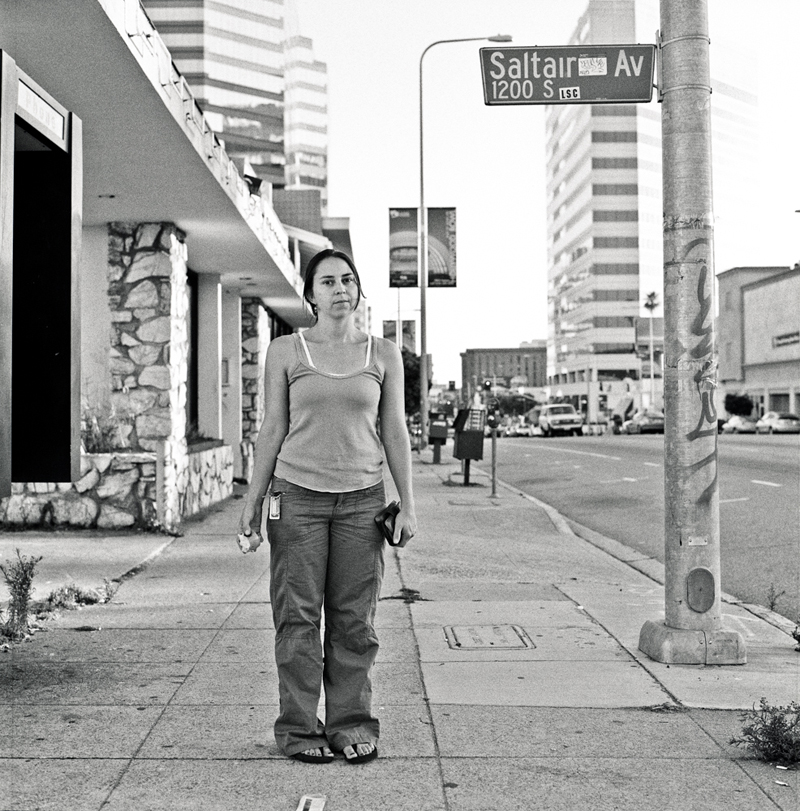Today we share the work of Zoran Milosavljevic as part of our expanded metropolis web series.
I was born in Los Angeles, California in 1969. When I was in elementary school I was diagnosed with dyslexia so I had problems reading and writing. These problems never were an issue when it came to looking at pictures (be they in a book or a movie). I noticed that as the viewer I could always at least have an idea of what was going on, this was the power that photographs had that the written word lacked.
I came to photography at first because was obsessed with gadgets and technology. Later on realized that photography put me on equal footing with my peers in school. I was finally able to convey an idea as clearly and easily as they were with writing. This led me to study photography at the San Francisco Art Institute and later cinematography at the American Film Institute.
While studying at the Art Institute, I shot documentary photography projects in Serbia (the former Yugoslavia) and China. Since graduating from the Art Institute, I have focused on photographing the eastern parts of Los Angeles documenting the largely unseen parts of the city and its people. This work includes an extended portrait project photographing one person per intersection for the entire length of Wilshire Boulevard from downtown to the Pacific Ocean. I have also traveled extensively on photographic projects to Hong Kong, to photograph the remaining months of British Rule, and to Japan, to document its street life and it’s people.



Wilshire Blvd
Wilshire Boulevard runs almost sixteen miles—roughly the length of Manhattan—from the skyscrapers in downtown Los Angeles to the ocean in Santa Monica. It cuts its way through communities that make up the city’s very heart. Some names every local knows, and others carry fame worldwide—MacArthur Park; Korea Town; Hancock Park; the Miracle Mile; Beverly Hills. Along its one hundred ninety-five blocks, the pedestrian encounters every kind of person, every nationality, every architectural style, every kind of business, every kind of landmark
that has come to typify the City of Angels. In short, Wilshire Boulevard is Los Angeles.
Wilshire, more than any other of Los Angeles’s thoroughfares, is alive. It stands out in a city mocked and celebrated for its car culture. Every block teems with vibrant humanity; people doing business, shopping, strolling for pleasure, simply getting out of the house. You can find the city itself—its people—out on Wilshire Boulevard. A portrait of the street and its people becomes a portrait of the city. The sense that Wilshire both emblematically and literally constitutes
the essence of Los Angeles drives this project. Between 2003 and 2013, I took portraits of people on every corner of Wilshire Boulevard. I gave myself simple rules. Every corner would be represented, documented by a street sign. I only took photographs of people I encountered on the street. They determined the locations, not landmarks, remarkable architecture, or great views. I wanted to document the living city, not its buildings.
I chose to take full-length portraits because they are more personal, more revealing. Head shots and other close-ups can be much more generic. They hide clothing, handbags, canes, and shoes. They also allow the person to camouflage himself. When the whole body gets involved, the person’s individuality emerges. There is simply too much to control. The way a woman holds her hands; a man’s legs when he stands; the angle of a head registering impatience; shoulders thrown back in pride—the revealing personal habits and quirks that make each of us unique—cannot be suppressed. I had no preparatory questions and set no requirements, except that they were on Wilshire Boulevard and willing to pose for roughly six exposures. I asked people to look at the camera, but gave no other directions. Their poses remain their own, personal statements of those individuals in those particular times at those specific places.
Zoran Milosavljevic
I think when you take a picture of someone that way, it’s a kind of test for them. They have an opportunity. It is a chance to answer the question: How do you want to be remembered? At this time, in this place? It’s up to you. Some took the opportunity to promote themselves. Others struggled to hide their emotions and themselves. I had no interest in taking flattering, or unflattering, shots. I wanted to show people as they wanted to present themselves.
I did not ask people for their stories, but many gave them anyway. There was the man just released from prison after serving time for real estate fraud. A woman studying law; a man selling Bibles who made me promise to read the scriptures; aspiring actors and musicians; homeless people expressing quiet dignity; and tourists exploring the city in the most unorthodox way, by walking. And on Wilshire and Ocean, the final block, I photographed a friend who in a city of 3.8 million people, just happened to be passing by. The result captures an essence unique to a city so often simplified, stereotyped, and misrepresented. Ultimately, the Wilshire Project makes tangible the diversity, complexity, and simple basic humanity inherent to Los Angeles.










To view more of Zoran’s work please visit his website.